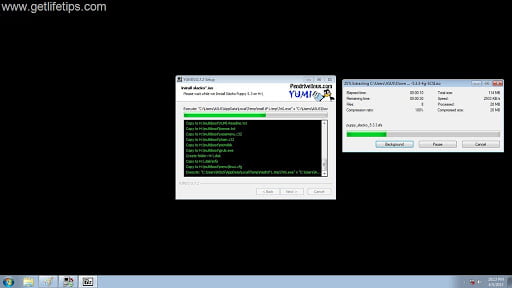Puppy Linux is a lightweight Linux distribution designed to run from removable devices such as DVDs and USB drives.
Puppy Linux, Easy Linux, containers, quirky, French, easyos, Polish, Portugese, Spanish, German, Barry Kauler Easy is a 'new paradigm' for a Linux distribution, a blend of the best ideas from Puppy and Quirky, and a fundamental rethink of the security, maintainability and ease-of-use. INSTALLING 'PUPPY LINUX' AS THE ONLY OPERATING SYSTEM OBJECTIVE AND DESIRED RESULT: Install 'Puppy Linux' as the only operating system in either a real computer or a virtual machine. BASIC ADVICE 'Puppy Linux' is a lean Linux distro that will run in ancient Intel-based and AMD-based computers with tiny amounts of RAM.
There are a number of Puppy Linux variants including Puppy Slacko, which utilizes the Slackware repositories, and Puppy Tahr which utilizes the Ubuntu repositories.
Other versions of Puppy Linux include Simplicity and MacPUP.
It is possible to use UNetbootin to create a bootable Puppy Linux USB drive but it isn't the method that is recommended.
Puppy Linux works great on older laptops, netbooks, and computers without hard drives. It isn't designed to be installed on a hard drive but you can run it that way if you want to.
This guide shows you the correct way to install Puppy Linux Tahr to a USB drive.
Download Puppy Linux Tahr
If you choose to, you can use UNetbootin to write the Puppy Tahr ISO to one of your USB drives.
Note that Puppy doesn't play well on UEFI based machines.
Boot into Puppy Linux using either the DVD or USB that you have created.
Install Puppy Linux Tahr to a USB Drive
Click on the install icon on the top row of icons.

When the above screen appears click on the Universal Installer.
Using the Puppy Linux Universal Installer
The Puppy Linux Universal Installer gives you options for installing Linux to a flash drive, a hard drive, or a DVD.
Make sure that the USB drive that you want to install Puppy Linux to is plugged in and click on USB flash drive.
Choose Where to Install Puppy Linux To
Click on the USB device icon and choose the USB drive that you wish to install to.
Choose How to Partition Your Puppy Linux USB Drive
The next screen shows you how the USB drive will be partitioned. Generally speaking, unless you wish to split the USB drive into partitions it is safe to leave the default options selected.
Click on the little icon in the top right corner next to the words Install puppy to sdx.
A window will appear confirming the drive that you intend to write Puppy to and the size of the partition.
Where Are the Puppy Linux Files?
If you have followed this guide from the beginning then the files required for booting Puppy will be on the CD. Click the CD button.
The files will also be available from the original ISO and so you can always extract the ISO to a folder and navigate to that folder by clicking the Directory button.
If you clicked on the CD button you will be asked to make sure the CD/DVD is in the drive. Click OK to continue.
If you clicked on the Directory button you will need to navigate to the folder where you extracted the ISO to.
Installing the Puppy Linux Bootloader
By default, you will want to install the bootloader to the master boot record on the USB drive.
The other options listed are provided as backup solutions for when the USB drive won't boot.
The next screen asks you to 'JUST KEEP GOING'. It seems a bit pointless but if you have been through the process before and it didn't work it gives you a couple of extra options to try.
The recommendation is to just leave the 'Default' option selected and click OK.
Puppy Linux Installation - Final Sanity Check
A terminal window will open with one final message telling you exactly what is about to happen to your USB drive.
If you are happy to continue press Enter on the keyboard.
The final sanity check isn't the final check however as the next screen tells you that all the files on the drive are going to be wiped.
There is one final screen after this which asks whether you want Puppy to load into memory when it boots up. If your computer has over 256 megabytes of RAM it is recommended that you answer Yes otherwise enter No.
Puppy Linux Download 32 Bit
Pressing Enter will install Puppy Linux Tahr to the USB drive.
Reboot your computer and remove the original DVD or USB drive and leave the newly created Puppy Linux USB drive inserted.
Download Puppy Linux For Usb Free
The first thing you will want to do is reboot again as this will ask where you want to save the SFS file.
Download Puppy Linux Bootable Usb
An SFS file is a large save file which is used to store any changes you make whilst using Puppy Linux. It is Puppy's way of adding persistence.